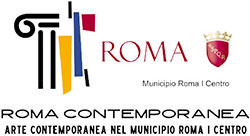Podocatharus is a contemporary Roman sculptor whose work is distinguished by a strong conceptual component that explores the relationship between different disciplines. His works are characterized by the interaction between humankind and their physical and emotional perceptions, prompting a profound reflection on existence and the exploration of nature.The artist begins with the idea that a true work of art is a concept, and as such, an answer. However, when humankind finds itself in situations and contexts that raise questions, it is difficult, if not impossible, to answer. The only solution is to take refuge in poetry: an activity so seemingly disconnected from reality—and yet so deeply rooted in the human soul—that it proves, beyond a denunciation of pain, a panacea, almost the only possible therapy. The artistic approach proposed is to shift the transference of trauma and bring it to the material: through the use of poetry, works emerge that align intense symbolism with profound reflection on human existence.The poem, from which the exhibition takes its subtitle, is "Roman Cinéma" by Giuseppe Ungaretti (part of a series published in Paris in 1919 in French, from which the author later distanced himself), dedicated to his childhood friend Mohammed Sceab, a companion in his studies and life, who committed suicide in 1913.
...II
flower with a slender stem
Slender white son
Which swayed in the wind
While she pined
Which swayed in the wind
III
Now you are an expert
In perfection of black... (excerpt)
In particular, in the work "Paris Opuscolo" (Paris Opuscle), the reference to alabaster, the desert, and black matter is explicit and captures all the pathos conveyed by Ungaretti's poetry. The black of the ink—a tool of language—is here underscored by a sfumato, a technical device that underscores the impossibility of fully grasping the poem's profound meaning.
The exhibition opens with a significant example of poetry written with matter: the sculpture dedicated to the Basilica of Santa Croce in Lecce (among the highest expressions of the local Baroque style).
The material part, in the lower part of the two registers, is used as if it were a hexameter dedicated to the nuances of the soft hues, typical of the color palette of Lecce stone, used on the facades of churches where the color black is a hyperbaton to give greater intensity to the sculptural verse.
Replacing the word with matter, which becomes experience, was the concept behind the creation of this series of works, previously exhibited at Palazzo Amati in Taranto in 2022.
Architectural representation is a tool for identifying the perfect form of thought and truth itself. Churches are the chosen medium for the analysis of the facades, which consists of the dissection of the individual parts and the reconstruction of the building's front, where gaps, cracks, and fissures emerge, highlighting movement and depth.
The arrangement of the material elements recalls the rhythm of fullness and void between sculpted matter and decorations typical of Apulian Baroque portals.
Poetry is arbitrary, analogical, but not infinite. The problem with one-dimensional and linear communication, like that of language, is that a translator is needed to insert it into a communicative structure like the display case, which is as isomorphic as possible.
Display cases (which contain the works) are the non-textual, but iconic, medium for organizing the information to be transmitted, and poetry does the same because it is a hypermedia modality of thought. Knowledge is horizontal due to its notional nature; poetry is vertical, like the work. Verticality is evoked by the display case's various registers.
The display case preserves the work in perfect custody. In the material elements at the bottom of the display case, one can glimpse the gravitational pull of the earth, where falls are uncontrolled and uncontrollable events.
Just as poetry uses only the necessary words, so the display case contains what is necessary.
The display cases are opaque because they represent the moment before revelation, in which matter overlaps with the word of poetry, an instant before the two blacks (of the word and the matter) merge, before a new truth manifests itself in all its brilliance.
The blurred effect present in the sculptures screens out chaos; it is the auroral moment common to poetry as such and to true works of art.
Another key point in the artist's research is the citation of nature in the upper register of some works: a dedication to the possibility of finding that common ground that unites everything, as happens with the pain present in the works recalled in the poems. Inserting the natural element directly onto the colored material is an attempt to underscore the eternal metamorphosis of the same. Nature is the collective unconscious and serves as a necessary decoder between matter and matter.



